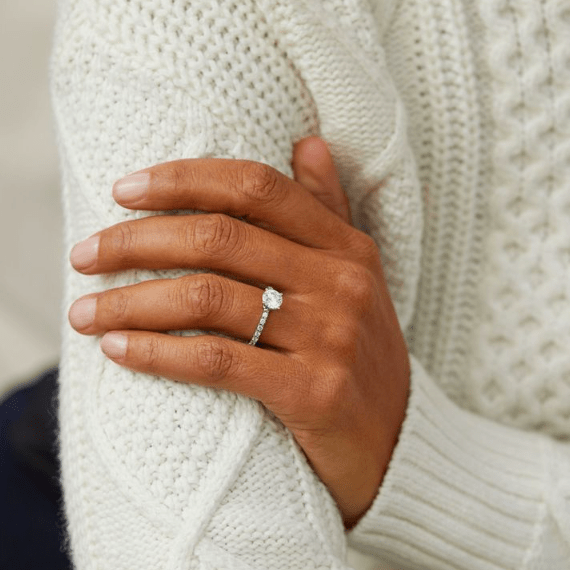
You could be asking what differentiates lab-grown and naturally mined diamonds before making a decision. In the end, not much. In actuality, the ordinary consumer doesn’t notice much of a difference between the two. According to Clean Origin’s Brandon Cook, lab-grown and mined diamonds are identical in terms of chemistry, optics, and gemology. The main differences between the two, however, are in how they are produced and the moral and environmental effects they have on society as a whole. According to fine jewellery expert Maria Doulton, the discrepancies are not in the stone’s physical composition but rather in its source. “How you feel about that is important,”

Nowadays, looking for an engagement ring might be utterly overwhelming. Selecting one design from the vast array of stones, shapes, and styles is a difficult undertaking. There is now one more level to think about for people who are interested in the traditional diamond: Do you want to choose a mined diamond or would you rather buy a lab-grown stone?
Lab-grown diamonds are created from a single diamond seed under the same heat and pressure as the earth’s crust, just like test-tube newborns. They do not leave a mining scar on the land, making them environmentally benign. This category has gained popularity on a global scale since they do not carry the stigma associated with blood diamonds. Most notably, they are less expensive than genuine diamonds while being more uniform.
Yes, it truly is a diamond. It is recognised as a diamond by even the most modern gem laboratory.
The main distinction is that these diamonds are created in a lab under carefully controlled conditions, as opposed to being mined from the earth. Fiona offers you an exceptional selection of designer jewellery that is fully refundable and set with brilliant lab-grown diamonds. To accurately reproduce the precision of a real diamond in a lab-grown diamond, it has taken approximately 60 years of work. While it can take a natural diamond billions of years to form deep within the earth, lab-grown diamonds can be created in as little as one to two months at the highest quality!
Lab-grown diamonds are exactly what they sound like: diamonds created in a lab. Cook says, “The most typical method is by a procedure called chemical vapour deposition. “You begin with a very thin slice of a diamond, where the diamond’s crystalline structure is already established. This is frequently referred to as the “seed” of a diamond and is made entirely of carbon, either naturally occurring or from a lab-created diamond. The diamond seed is put in a vacuum, where carbon atoms absorb into the diamond seed. It resembles 3-D printing a diamond in many ways. The diamond will be ready to be cut and polished once it has “grown” in this chamber and is comparable to a natural diamond.
Hope it helps!





